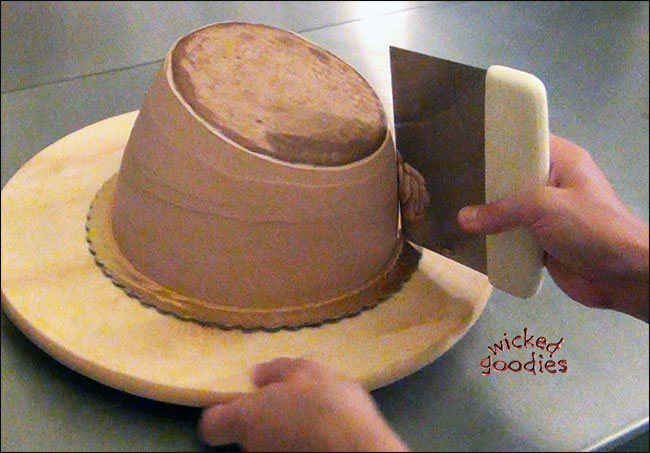Cake Frosting Basics
page 28 of 50
Chilling & Whittling
Instead of fussing over every imperfection while the frosting is still soft, put the cake in the refrigerator and let it chill for at least one hour or until it grows cold. Imagine how hard a stick of butter feels when it first comes out of the fridge. That’s how hard the cake’s shell should be.

Topsy turvy cake tier, being frosting upside down
Once the cake is cold, you can add or whittle away buttercream as needed in places that are still dented or bulgy. This is the time to make corrections because the cold frosting will be firm and sturdy. Any time that the buttercream gets too soft that it can’t hold its edge, return the cake to the refrigerator and let it grow hard before resuming frosting again.
There are a number of in-and-out-of-the-fridge stages to this type of buttercream frosting method. The better you get at it, the less number of times you have to go in and out of the fridge with the cake. The advantage to this technique is that you have an infinite amount of tries to re-do the finish, making it possible for even a beginner to achieve smoothly frosted, level, and symmetrical tiers.
page 28 of 50




When the cake with final frosting come out from the fridge, should I yse a bench scraper that has been dipped in hot water to smooth out the frosting?
It does not have to be heated. It will work without any heat. However if you may heat it if you want. If you do that, make sure to dry it off first.